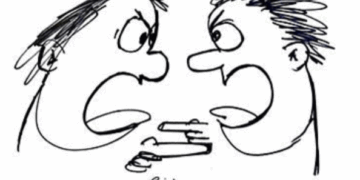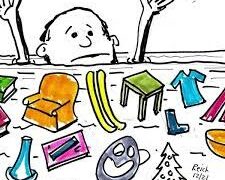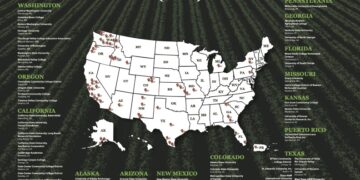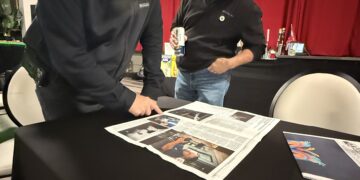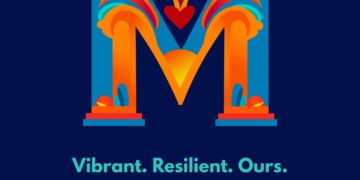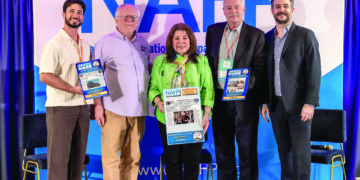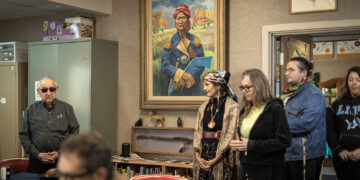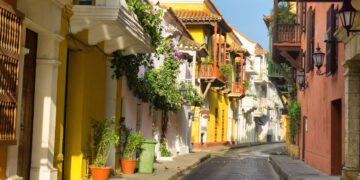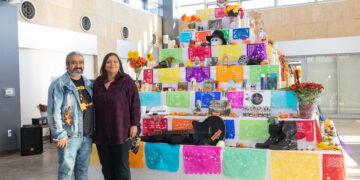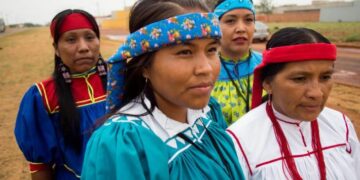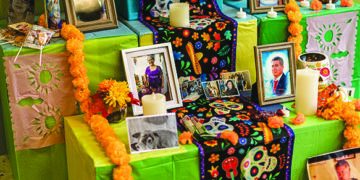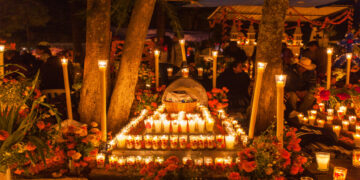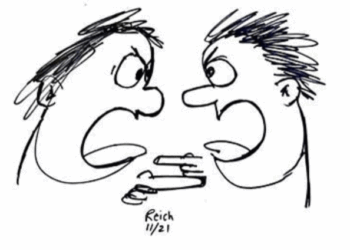Paraguay is one of the central South American countries, located between Bolivia and the two giants: Brazil and Argentina. It is a landlocked country, however, with ports on the Paraná River and the Paraguay River, which crosses the country from north to south, dividing it between east and west. The Iguazu Falls form part of the border between Brazil, Argentina, and Paraguay. It boasts large expanses of swamps, subtropical forests, and Chaco, natural expanses that encompass savannas and scrublands.
Human presence in Paraguay dates back to the Neolithic period, around 3,200 BC. During the pre-Columbian period, it was inhabited by indigenous peoples of the Tupi-Guarani and Mataco-Guaicurú groups. The arrival of the Spanish marked the beginning of Hispanic rule over this territory until the 19th century, when Paraguay achieved its independence in 1811, the third in Latin America to do so. The Paraguayan Constitution declares it a multicultural and bilingual country and establishes Spanish and Guaraní as its official languages. The latter is spoken by 87% of its inhabitants, and its oral and written use is regulated by the Guaraní Language Academy.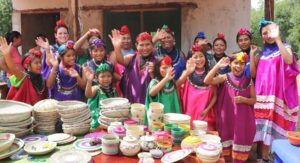
Guarani Myth About Of The Origin Of Earth
At the beginning of time, the Creator God, Ñamandu, was alone, having slowly created himself. There were no trees, no mountains, no people, nothing. In his solitude, Ñamandu began to create.
First, the language of men, words.
And then he wanted someone else to be able to speak, and he created other gods, four pairs of gods who in turn would have children who were also gods.
Then, he made the tip of the staff he always carried in his hand grow thicker and thicker. From there, little by little, the Earth emerged. So that the Earth wouldn’t move, he created a palm tree. It was a palm tree that would last forever and was right in the middle of the Earth.
Then he created four more at each of the cardinal points. And so, with those five palm trees that would live forever, without ever drying up, the Earth remained firmly planted.
He supported the sky on four columns, four wooden poles identical to his staff.
It was then that he made the first animals and the first plants.
One of the first to fly was the hummingbird; the viper was the first to crawl. The first to sing was the grasshopper.
He had made the Earth completely covered in a lush jungle, so that there would be treeless fields, he created the locust. It went everywhere, sticking its tail in some places, where grass grew and the trees disappeared, and thus the plains were formed.
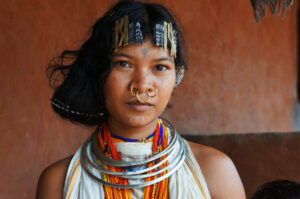
When they were ready, the partridge arrived and, singing happily, stayed there to live.
Then he invented the armadillo, which immediately began to dig the earth. The owl became the mistress of the darkness; that’s why it comes out only at night and sleeps during the day.
Then many other animals came, and also the first men and women. Then, Ñamandu returned to the sky and left the other gods in charge of taking good care of everything.
Time passed; Some people had become very good, but others had become very bad: not everything was going well, so the gods decided it was best to make amends. But to avoid leaving things half-done, they produced a flood: the entire Earth was inundated. The good people were able to ascend to heaven with Ñamandu, but the bad ones were transformed into animals: frogs, fish, and other creatures.
Later, Ñamandu asked another of the gods, named Jakaira, to be in charge of rebuilding the earth, and he, in turn, delegated the task to his son, Pa-pa Mirí. Pa-pa Mirí worked hard. He made new plants, new animals; he kneaded the new earth and filled it with trees and grass. He made rivers and streams. But it seems that before he finished, his mother called him, and Pa-pa Mirí abandoned his work. And the Guaraní say that this is why there are mountains that are nothing more than piles of earth and stones left over from the God and that are of no use to the people.
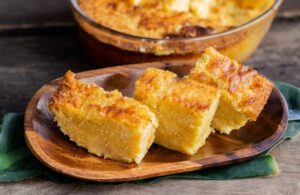
Paraguayan Soup
Ingredients:
- 3 large onions
- 3 cups water
- 1 tablespoon coarse salt
- 3/4 cup cold pork fat
- 4 eggs
- 350 grams fresh cheese
- 650 grams corn flour
- 1 cup curdled or natural milk
- 1 heaping tablespoon cream (optional)
Preparation:
- Finely chop the onion. Boil it with the water and salt for 10 minutes in a covered saucepan. Let it cool.
- Whisk the fat. Add the eggs one by one, continuing to whisk. Add the crumbled cheese. Add the onion with the water in which it was boiled and gradually add the corn flour, alternating with the milk and cream. Mix gently. Pour into a large, greased and floured baking dish.
- Bake in a hot oven (200°C) for approximately 1 hour.
- Serve in small portions and place on the table.
Paraguay
Paraguay es uno de los países en el centro de Suramérica que se encuentra entre Bolivia y los dos gigantes: Brasil y Argentina. Es un país sin colindancia al océano, no obstante, cuenta con puertos sobre el río Paraná y el río Paraguay que cruza de norte a sur dividiendo el país entre oriente y occidente. Las cataratas de Iguazú forman parte de los linderos entre Brasil, Argentina y Paraguay. Cuenta con grandes extensiones de pantanos, bosques subtropicales y chaco, extensiones de naturaleza que abarcan sabanas y matorrales.
La presencia humana en Paraguay se remonta hacia el Neolítico, que data de unos 3200 años antes de Cristo. Durante el período precolombino estuvo habitado por pueblos indígenas de los grupos tupí-guaraní y mataco-guaicurú. La llegada de los españoles marcó el inicio del dominio hispánico de este territorio hasta el siglo XIX, cvuando en 1811 Paraguay consiguió su independencia, siendo el tercero de América Latina en lograrlo.
La Constitución paraguaya lo declara como un país multicultural y bilingüe, y establece como idiomas oficiales el español y guaraní. Esta última es hablada en el país por el 87 % de sus habitantes y su uso oral y escrito está regulado por la Academia de la Lengua Guaraní.

Mito Guaraní sobre el origen de la tierra
En el principio de los tiempos estaba solo el Dios Creador, Ñamandu, que de a poco se había creado a sí mismo. No había ni árboles ni montañas, ni gente, nada. En su soledad, Ñamandu empezó a crear.
Primero el lenguaje de los hombres, las palabras.
Y entonces quiso que alguien más pudiera hablar y creó a otros dioses, cuatro parejas de dioses que a su vez iban a tener hijos también dioses.
Después, hizo que la punta del bastón que siempre llevaba en la mano empezara a engordar, más y más. De allí salió la Tierra, de a poquito. Para que la Tierra no se moviera, creó una palmera. Era una palmera que iba a durar para siempre y estaba justo en el medio de la Tierra.
Después creó otras cuatro en cada uno de los puntos cardinales. Y así, con esas cinco palmeras que iban a vivir siempre, sin secarse nunca, la Tierra quedó bien firme.
Al cielo lo dejó apoyado sobre cuatro columnas, cuatro postes de madera iguales a su bastón.
Fue entonces cuando hizo los primeros animales y las primeras plantas.
Uno de los primeros que voló por ahí fue el colibrí; la víbora fue la primera que se arrastró. La primera en cantar fue la cigarra.
Había hecho la Tierra toda cubierta de una selva frondosa, para que hubiera campos sin árboles creó la langosta, ella iba por todos lados, en algunos clavaba la cola en el suelo y allí crecía el pasto y desaparecían los árboles, así se formaron las llanuras.

Cuando estuvieron listas, llegó la perdiz, que cantando contenta se quedó a vivir ahí.
Después inventó el tatú, que se puso enseguida a escarbar la tierra. La lechuza quedó como dueña de la oscuridad; por eso, sale nada más que de noche y duerme de día.
Después vinieron otros muchos animales y también los primeros hombres y mujeres. Entonces, Ñamandu se volvió al cielo y les dejó encargado a los otros dioses que cuidaran bien de todo.
Pasó el tiempo; algunas personas se habían vuelto muy buenas, pero otras se habían vuelto muy malas: no todo andaba bien, así que los dioses decidieron que era mejor hacer arreglos. Pero para no dejar las cosas a medias, produjeron un diluvio: toda la Tierra se inundó. La gente buena pudo subir al cielo con Ñamandu pero los que eran malos se transformaron en animales: ranas, peces y otros bichos.
Después, Ñamandu le pidió a otro de los dioses, que se llamaba Jakaira, que se encargara de hacer de nuevo la tierra, éste a su vez delegó la tarea en su hijo Pa-pa Mirí. Pa-pa Mirí trabajó mucho. Hizo nuevas plantas, nuevos animales; fue amasando la tierra nueva y llenándola de árboles y pasto. Hizo ríos y arroyos. Pero parece que antes de que terminar lo llamó la madre, y Pa-pa Mirí abandonó su obra. Y dicen los Guaraníes que por eso hay montañas que no son sino montones de tierra y piedras que le sobraron al Dios y que a la gente no le sirven de nada.
Receta Sopa Paraguaya
Ingredientes para 12 personas:
- 3 cebollas grandes
- 3 tazas de agua
- 1 cucharada de sal gruesa
- 3/4 taza de grasa de cerdo (fría)
- 4 huevos
- 350 grs. de queso fresco
- 650 grs. de harina de maíz
- 1 taza de leche cuajada o natural
- 1 cucharada colmada de nata de leche (optativo)
Preparación:
- Cortar finamente la cebolla. Hacerla hervir con el agua y sal durante 10 minutos, en cacerola tapada. Dejar enfriar.
- Batir la grasa. Agregar uno a uno los huevos, continuando el batido. Agregar el queso desmenuzado. Incorporar la cebolla con el agua en la cual se hirvió y poco a poco la harina de maíz, alternando con la leche y nata. Mezclar con suavidad. Verter sobre una asadera grande engrasada y enharinada.
- Cocinar en horno caliente (200°) durante 1 hora, más o menos.
- Servir en pequeñas porciones y poner en la mesa.





